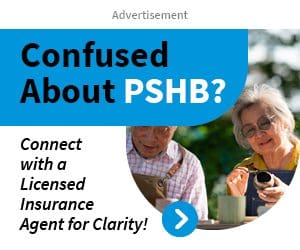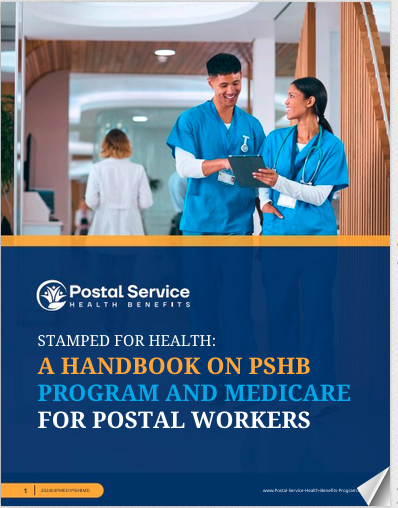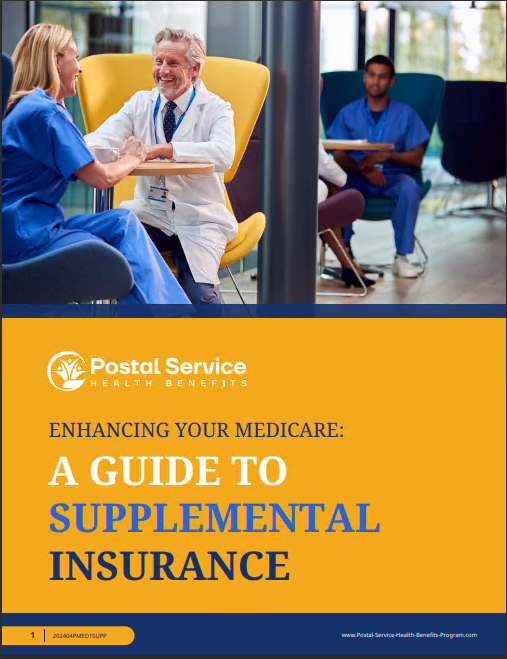Key Takeaways:
-
The Postal Service Health Benefits (PSHB) program in 2025 simplifies healthcare options for USPS employees and retirees, offering tailored plans with enhanced integration.
-
By coordinating with Medicare and offering consistent coverage, PSHB encourages smarter healthcare decisions for enrollees.
Understanding the New PSHB System
The introduction of the Postal Service Health Benefits (PSHB) program marks a significant shift in healthcare coverage for USPS workers and retirees. Designed specifically for the postal workforce, PSHB replaces the Federal Employees Health Benefits (FEHB) program, streamlining options and addressing unique needs. This move ensures coverage that is not only accessible but also better aligned with the daily realities of USPS employees. Whether you’re a current employee, retiree, or eligible family member, it’s crucial to understand how this system works and what it means for your healthcare choices.
PSHB offers a focused approach to healthcare, with tailored benefits aimed at enhancing your experience. The simplified structure reduces confusion, giving you more confidence in choosing a plan that meets your unique requirements. Additionally, by addressing the specific challenges USPS employees face, PSHB makes healthcare more accessible and straightforward.
Why the Change from FEHB to PSHB?
The move to PSHB isn’t just administrative; it’s designed to provide more focused benefits to USPS employees and retirees. Here’s why the transition is beneficial:
-
Tailored Coverage: PSHB plans are designed with postal employees in mind, offering benefits that better align with your needs.
-
Simplified Options: With fewer plans to navigate compared to FEHB, making informed choices is easier.
-
Improved Coordination: PSHB integrates seamlessly with Medicare for those eligible, enhancing coverage and potentially lowering out-of-pocket costs.
-
Enhanced Stability: By focusing exclusively on USPS employees, PSHB creates a reliable system that can adapt to the evolving needs of its members.
This change ensures that the healthcare program evolves with the unique demographics of the USPS workforce, providing comprehensive and affordable care. The result? A system that’s more streamlined and capable of addressing the challenges USPS employees face in their day-to-day lives.
Enrollment Basics: Who and When?
PSHB enrollment started during the Open Season from November 11 to December 13, 2024, and coverage began on January 1, 2025. Missing these deadlines can lead to significant issues, so it’s important to act within the enrollment window. Here’s what you need to know:
-
Who Must Enroll: USPS employees, retirees, and eligible family members not covered by another FEHB plan need to choose a PSHB plan.
-
Medicare-Eligible Participants: If you or a family member are eligible for Medicare, enrollment in Medicare Part B is typically required to maintain PSHB coverage unless specific exemptions apply.
-
Qualifying Life Events (QLEs): Changes outside of Open Season are limited to QLEs, such as marriage, birth of a child, or loss of other coverage.
Understanding and adhering to these requirements ensures uninterrupted healthcare coverage. Staying proactive about enrollment can prevent unnecessary stress, so mark these timelines clearly on your calendar.
Navigating Medicare Integration
One of the key features of PSHB is its integration with Medicare for eligible participants. This coordination offers:
-
Comprehensive Coverage: Combining Medicare Part B with PSHB fills coverage gaps, providing robust healthcare protection.
-
Prescription Drug Benefits: Medicare-eligible enrollees automatically gain prescription drug coverage through a Medicare Part D Employer Group Waiver Plan (EGWP).
-
Cost Savings: Many PSHB plans include benefits like Part B premium reimbursements or waived deductibles, which can significantly reduce healthcare expenses.
-
Seamless Transition: Medicare and PSHB work together to ensure smooth and effective coordination of your healthcare needs.
Medicare integration under PSHB is mandatory for most Medicare-eligible enrollees, ensuring a cohesive approach to your healthcare. This feature makes PSHB particularly advantageous for retirees who want to manage their expenses without compromising on care quality.
Key Benefits of the PSHB Program
PSHB brings several advantages that enhance the healthcare experience for USPS workers and their families:
-
Enhanced Plan Choices: While fewer than FEHB, the available plans focus on providing high-value benefits tailored to postal employees.
-
Simplified Decision-Making: The program’s structure makes it easier to compare and select the right plan for your needs.
-
Stable Costs: PSHB works to maintain affordability by negotiating favorable terms, even as healthcare costs rise nationwide.
-
Access to Supplemental Benefits: Many plans include valuable extras like dental, vision, and hearing coverage.
-
Predictable Healthcare: Knowing what’s covered helps you plan for future healthcare expenses, reducing uncertainties.
By focusing on these priorities, PSHB ensures you’re not just covered but also empowered to make smarter healthcare choices. The emphasis on flexibility, stability, and affordability creates a system you can depend on.
Making the Most of PSHB’s Features
To maximize the benefits of PSHB, consider these tips:
-
Review Plan Documents: Each year, plans may adjust premiums, deductibles, or benefits. Reviewing these changes ensures you’re not caught off guard.
-
Take Advantage of Preventive Care: Most PSHB plans cover preventive services at no additional cost. Regular checkups and screenings can help avoid larger health issues.
-
Use In-Network Providers: Sticking to providers within your plan’s network can save you significant money on healthcare services.
-
Coordinate with Medicare: If you’re eligible for Medicare, ensure your PSHB plan complements your existing coverage effectively.
-
Explore Supplemental Benefits: Look into plans offering additional perks like wellness programs, dental coverage, or hearing aid discounts.
These proactive steps help you get the most out of your health benefits while minimizing costs. Remember, the better you understand your plan, the more effectively you can use it to meet your needs.
Addressing Common Questions
Switching to a new system often raises questions. Here are some answers to common concerns about PSHB:
-
What happens if I don’t enroll? Failure to enroll in a PSHB plan may result in losing your health coverage.
-
Do retirees need to enroll? Yes, retirees must select a PSHB plan unless they’re covered under a spouse’s FEHB plan.
-
What if I’m already on Medicare? Medicare-eligible individuals must enroll in Part B to maintain PSHB coverage unless exempt.
-
Can I change my plan later? Changes are limited to Open Season or qualifying life events.
-
Are there cost savings? Yes, features like reduced deductibles and premium reimbursements often lead to overall savings for enrollees.
Understanding these details ensures a smooth transition and helps you avoid unnecessary complications. If you’re unsure about any aspect of your coverage, take the time to ask for clarification.
Financial Considerations for USPS Employees
Healthcare costs are a major concern for many. PSHB addresses this by offering:
-
Predictable Premiums: While costs can vary by plan, PSHB aims to provide stable and transparent pricing.
-
Out-of-Pocket Caps: PSHB plans include limits on out-of-pocket expenses, ensuring protection against high healthcare costs.
-
Pharmacy Savings: Prescription drug coverage through the EGWP reduces the financial burden of medications for Medicare-eligible enrollees.
-
Transparent Billing: Clear breakdowns of costs help you understand your financial responsibilities better.
These measures make it easier to budget for healthcare, providing peace of mind and financial stability. The emphasis on cost control ensures that you can prioritize your health without unnecessary financial strain.
Staying Informed About Your Coverage
Healthcare policies and programs evolve over time, and staying informed is key to making the best decisions. Here are some ways to keep up:
-
Review Your Annual Notice of Change (ANOC): This document outlines updates to your plan’s costs and benefits each year.
-
Attend USPS Benefits Briefings: These sessions provide valuable insights into plan options and program changes.
-
Use Online Tools: Many PSHB plans offer online portals to track claims, manage benefits, and find in-network providers.
-
Seek Expert Guidance: If you’re unsure about your options, consult a benefits counselor or HR representative.
By staying engaged, you can navigate the complexities of PSHB with confidence. Knowledge is your best tool for making informed decisions that benefit you and your family.
A Healthier Future with PSHB
The PSHB program’s focus on smarter healthcare choices reflects a commitment to USPS employees and retirees. By offering tailored benefits, seamless Medicare integration, and cost-saving opportunities, PSHB is designed to provide the comprehensive coverage you deserve. Taking the time to understand and utilize this system will help you achieve better health outcomes and financial stability. Empower yourself with the knowledge and tools PSHB provides, and take control of your healthcare journey.






